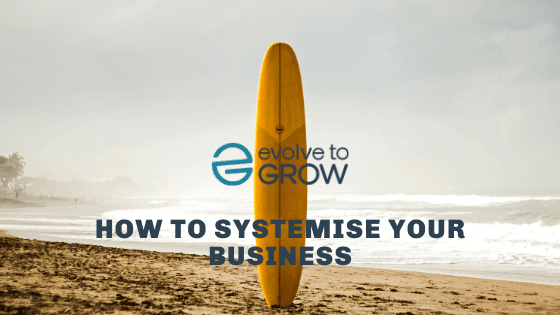Operations
How to Systemise Your Business

I bet it’s happened to you before. You go on holidays and spend much of your time working – responding to emails, following up staff questions, writing proposals.
The work doesn’t stop and you need to do it. The whole reason for the vacation was to unwind and spend time with family and friends.
By the end of your holiday you’re so tired need another one (minus the work).
In fact, taking time out, be it a holiday or weekend, has become so foreign that it’s beaten you into submission believing this is your life.
If this sounds like you, something is wrong.
Your business is not where it should be. Selling it, franchising it or even working less are not options because your business hasn’t been systemised.
Contents
Systems are the solution to your problems.
It stands to reason that all businesses face challenges that lead to frustration for business owners and customers. Frustration occurs when there is a specific, recurring problem that the owner has no control over (like working while on holiday). Have you ever uttered the following?
“My cash flow is stressing me out.”
“I can’t seem to hire good people.”
“Our quality needs improvement.”
“I don’t get enough sales leads.”
“Profits are down.”
We’ve all made these statements. Although, the difference between making these statements once and saying them consistently is putting a system in place to address the frustration and eradicate the problem.
I’ve worked with many businesses who’ve believed they had systems in place and to a degree they did. But their systems were informal and that’s the reason for such inefficiency.
An effective system is a procedure, process, method, or course of action that produces a consistent and measurable result. When systems are set up properly and well documented, they remove all of the guesswork and deliver on what they’re required to.
If you’re not getting measurable and positive results, you have an inefficient system in place (or none at all).
Here’s why I believe systems are needed in your business:
- Routine systems and procedures enhance profitability
- Once the system is defined, money is made when staff learn to do it correctly
- Generalised solutions, “human nature,” etc are replaced with detailed procedures, performance standards, and accountability
We’re not talking rocket science, creating a system can be as simple as writing it down in a document or checklist. Something basic like this is a great place to start. Of course, some systems need to be more complex but you can keep iterating as your business evolves.
Putting a system in place is much needed and will allow you to enjoy your holiday. However, all new systems require owners and employees to have the “will” to implement change and stick with it, without falling back into bad habits.
There are three stages to developing an effective system.
Stage 1: Design your system
First you need to identify the areas of your business or services that need to improve. It shouldn’t be too hard to find what needs fixing. Hunt through the business information and metrics you have to assess what’s working or what’s not. Articulate what you’re frustrated at or with. Ask your customers what they are dissatisfied with in their dealings with you. All of this will give you good research to work from.
Defining the problem and its causes will often point to the system solution. Describe what the new system will look like and what effect it will have on the organisation. Estimate the costs and benefits of the new system and decide if you have the resources to see the development process through to completion.
Stage 2: Develop your system
Innovation is more than a business buzzword. You need to be innovative in thinking to succeed and apply it to new procedures, processes and methods to solve your problems (and problems your customers face) and accomplish objectives.
In essence, innovations are the “best known way of doing things” and should be simple, repeatable, and customer-driven. NetFlix innovated with a better way to allow people to watch movies and TV shows. It was always game over for Blockbuster when they refused to buy NetFlix early on.
The final system should contain all definitions, policies, detailed procedures, forms, management reports, and every component necessary for an employee to operate the system with exactness.
Stage 3: Deploy your system
The hard work has been done. Implement the documented system you’ve created and make sure all employees buy-in.
Now you just have to be consistent. Perform the task or procedure the same way every time (or until innovation improves it). Measure the impact of each system innovation on your business and its effectiveness over time, and be accountable. Without accountability, you system and your business are doomed to fail.
These three step guide is essential for growing your business beyond where it is now. But it’s not a once off, you’ll have plenty of highly-important systems and smaller systems in place once you identify the themes in stage 1.
Note: Accounting and marketing systems are what drive your business forward. So, pay special attention to these two areas.
A business that can operate independently of you must be built on systems.
If you need more encouragement to develop systems, think of it like this. Each system in place is one step closer to a business that leads you to financial and personal freedom.
Step back and look at your business as a world of integrated systems. Identify weaknesses, action them and create systems that enable to build the business you intended.
Become a systems thinker.
